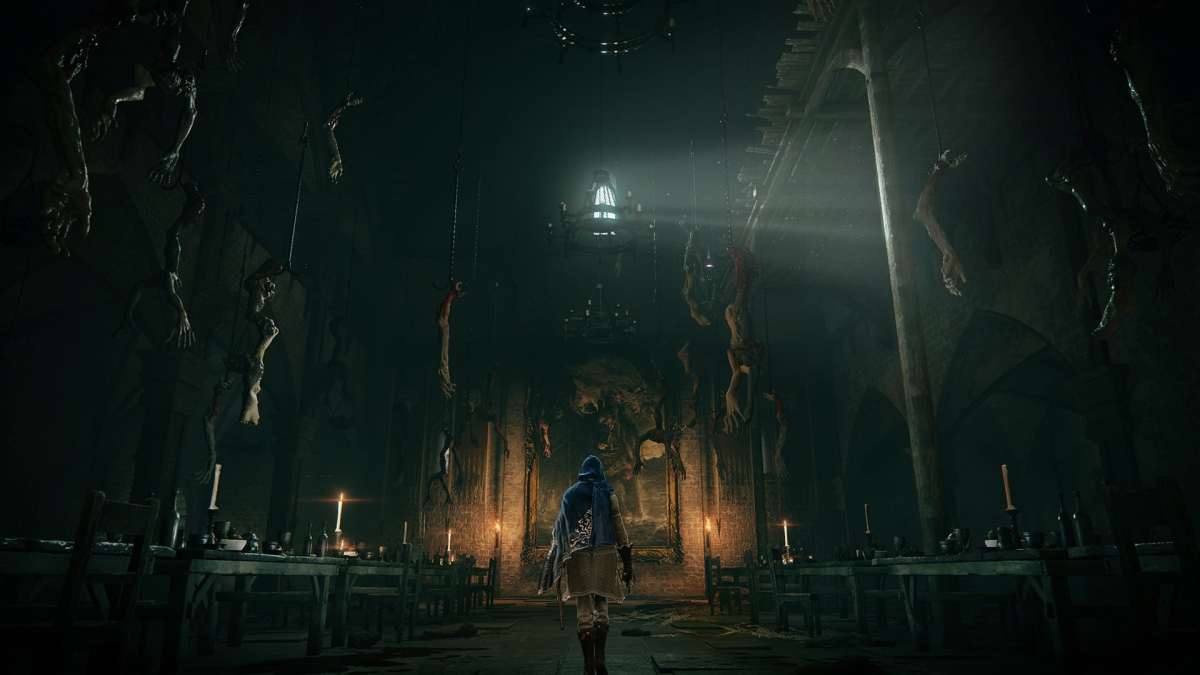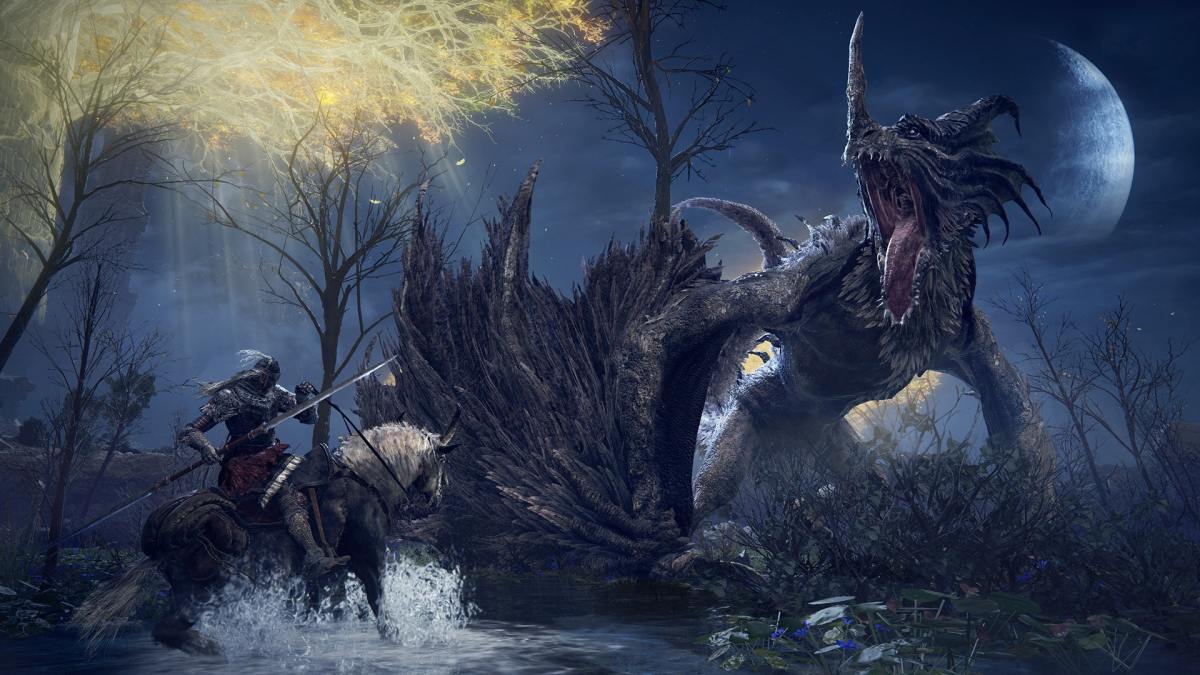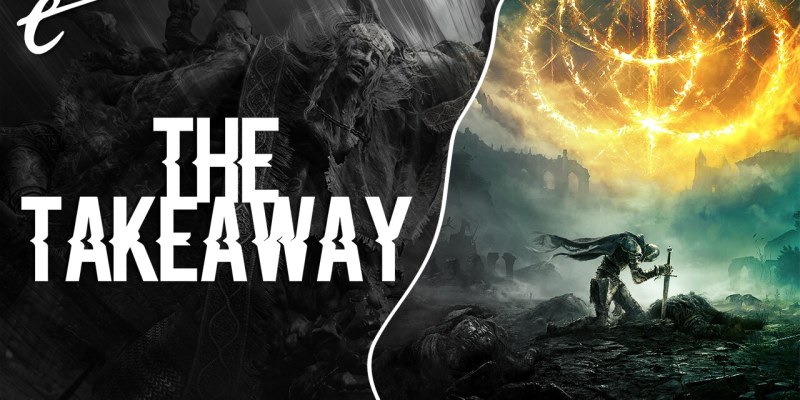Despite what some people might tell you (*cough* our pal Yahtzee *cough*), open-world games aren’t dead. That said, the genre in 2021 is absolutely in a bit of a rut. The formula that the likes of Grand Theft Auto III, Assassins Creed, and Far Cry 3 helped bring to the forefront of gaming feels like it’s been inserted into nearly every other AAA game we see nowadays, sometimes seemingly for no other reason than the thought that bigger must equal better. As we’ve seen from the recent collective shrug that games like Far Cry 6 have been met with, some are growing tired of this design philosophy appearing in everything from shooters to RPGs to historical epics to space operas. A sprawling map littered with infinite tasks that ultimately feel like busywork just doesn’t seem to cut it anymore.
But if there’s anyone who could get us out of our current open-world malaise, it’s the folks at FromSoftware. And if what we saw in the most recent 15-minute look at gameplay is any indication, 2022’s Elden Ring looks like just the game we need to inject some life into one of gaming’s most popular, and increasingly stagnant, genres.
First off, it feels like Elden Ring is going to have all the things we already love from the team’s previous games. The gameplay here looks like it pulls various tenets that FromSoftware has honed throughout the Souls series, Bloodborne, and Sekrio games, but is now fitting those pieces inside the structure of an open world that lends itself to the kinds of personal and dynamic gameplay moments that we love to excitedly tell our friends about.

The recent gameplay has so many little touches that I love. The developer’s trademark weirdo NPCs to chat with, like a talking urn named Alexander the Iron Fist that speaks with a British accent. Combat scales from Sekiro-esque stealth kills assisted by sleeping arrows you craft on the fly, to enough magic arrows and enchanted storm clouds that’d make Big Hat Logan blush, to summoning just an absolute mess of weird little goblin ghosts to help you ransack an enemy encampment. And there are boost pads that allow your horse-thing to jump stupidly high into the air, which points to FromSoftware firmly understanding that, first and foremost, the act of getting from point A to point B in an open-world game needs to feel fun. This is further enunciated by what seems like a complete lack of fall damage, which is an absolute win in my book.
But the standout moment for me came about halfway through, when the player dropped down a series of inconspicuous ledges, only to find an entrance to a dungeon nestled into the mountainside at the bottom. For me, open-world games excel when your own natural curiosity and experimentation results in finding something completely unexpected and exciting. It gives these moments of discovery a personal touch, and with enough of them scattered throughout the adventure, the story you’re telling suddenly starts to feel much more authored. And from the looks of it, Elden Ring’s open world is going to be filled with these rewarding little micro mines, dungeons, and catacombs that feel like classic FromSoftware locations through and through.
During the Elden Ring demo, I saw shades of some of my favorite open-world games — the ones that have managed to truly stand out among their countless peers. Being able to tag points of interest on the map and see them represented as pillars of light in the world brings to mind exploring Hyrule in The Legend of Zelda: Breath of the Wild. Watching the wisps of light act as a prompt for adventure that you could choose to follow or ignore feels a lot like Ghost of Tsushima’s excellent Guiding Wind. Horseback combat that sees you dashing through the legs of a massive beast echoes the melancholy danger of Shadow of the Colossus. And seeing a massive dragon / wyvern (I’ll be honest — I have no idea what the difference is) plop down into a field at a seemingly random point hearkens back to the dynamic story moments that peppered Red Dead Redemption 2.

And holy moly, the views we’re shown throughout the footage look staggering. From an auburn forest that looks like a raging wildfire when viewed from above, to a lonely castle piercing through a rolling fog, to the majestic Erdtree that seems to exist as the nexus of this universe, Elden Ring feels built around moments of awe where you reflect on how far you’ve come and prepare for how much further you have left to go.
My excitement for the game also stems from the fact that FromSoftware is one of the last remaining AAA developers who has gone the entire decade without taking a big L. Time and time again, we’ve seen once seemingly untouchable studios stumble and lose a lot of the good grace they’d previously earned. Whether it’s Bethesda with Fallout 76, CD Projekt Red with Cyberpunk 2077, BioWare with Mass Effect: Andromeda and Anthem, or Crystal Dynamics with Marvel’s Avengers, all it takes is one underwhelming game to fall out of the collective good graces. FromSoftware hasn’t had that yet — even its low point with Dark Souls 2 still resulted in a pretty solid game, with nearly everything else being pretty damn amazing. Because of this, its earned its current benefit of the doubt.
It takes something special for an open world to stick out nowadays. The clockwork nature of Outer Wilds, the sheer joy of traversal in Sunset Overdrive, the contemplative beauty of Red Dead Redemption 2, the genuine feeling of connection in Death Stranding, or the design perfection of Breath of the Wild are the things that come to mind. And after spending an all-too-brief 15 minutes in the world that FromSoftware has created, it’s starting to feel like Elden Ring is going to be the game we need in 2022 to get out of our open-world rut.
